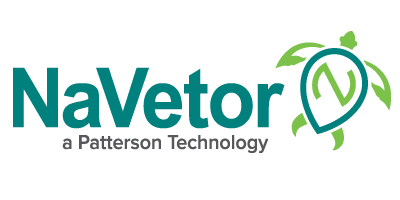Happy Cybersecurity Month! Securing your veterinary practice from cyber attacks is important all year long, but October is a great time to reassess your security program and make sure it is up to par. Here are 10 cybersecurity tips for veterinary practices to consider. How many of these are already in place in your practice, and how many require some attention?
1. Choose a Secure Software Provider: Select a reputable vendor with a strong track record in cybersecurity. Where is the software hosted, and how secure is that environment? With NaVetor cloud software, we utilize Microsoft Azure server technology, which is continuously updated by Microsoft and is considered the gold standard. In fact, the same technology is used by government agencies to protect their own data in the cloud.
2. If Possible, Use Strong Authentication: If your software offers the option for multi-factor authentication (MFA), consider using it. This adds an extra layer of security beyond passwords. And speaking of passwords, make sure employees change them quarterly and avoid storing them in their browsers or smartphones.
3. Regularly Update Software: This is relatively easy for cloud software users, as updates automatically happen in the background! No need to manually update your software as you did in the server days. In addition to new and enhanced features, software updates also contain security patches to protect against the latest threats. (If you’re not using cloud software and need a separate backup service, consider PattLock by Patterson.)
4. Implement Access Controls: Limit software access to only your staff members, and be sure to assign roles and permissions in your software settings. Not every staff member needs access to everything stored in your software. The tighter, the better.
5. Secure Access Points: If you’re using cloud software, it’s possible that staff members are using their personal devices to access the software, in addition to their onsite workstations. Ensure that all devices are protected with up-to-date antivirus and antimalware. You may want to establish a BYOD (Bring Your Own Device) policy and regularly check devices for compliance.
6. Backup Data Regularly: This is another potential benefit of cloud software vs. server software. Most cloud software vendors include data backups with their monthly fees, so like regular software updates, this may automatically happen in the background. Make sure you know how often your data is backed up, and how you can access it if needed.
7. Train Staff on Security: Cybersecurity training for your team raises awareness about common threats like phishing and social engineering. The American Bankers Association has some excellent training resources available at including red flags to watch for in phishing emails and text messages.
8. Conduct Regular Security Audits: This can identify vulnerabilities and weaknesses in your cloud software infrastructure, which you can address promptly. Your IT staff or consultant can likely help with this, or you can hire a cybersecurity expert to conduct an audit.
9. Create an Incident Response Plan: This plan should detail how your practice will respond to security incidents, including data breaches.
10. Consider Working with a Cybersecurity Expert: An expert can provide guidance, conduct security assessments, and help your practice stay updated on the latest security threats and best practices.
Cybersecurity is an ongoing process and should be considered all year long, but October is a great month to assess and update your cybersecurity plan. Cloud software has some security measures built right in, but it still pays to stay one step ahead of scammers.
Request a Demo
Inspired by what you’ve seen? Interested in seeing how NaVetor can work in your practice? Contact us to set up a personalized demonstration of the software.
Sales: 877-422-8838

